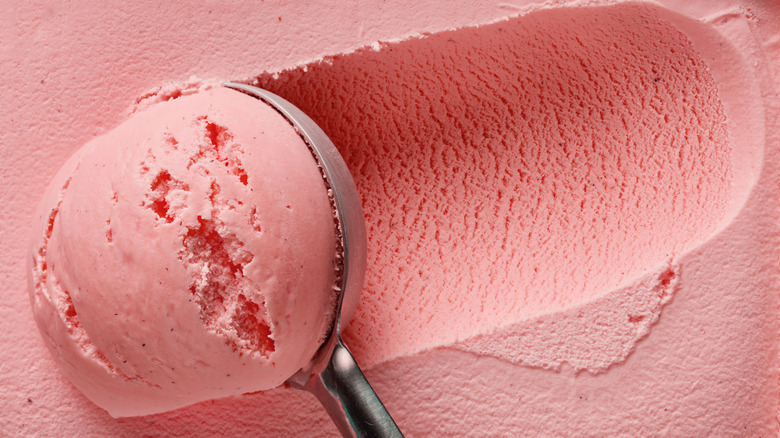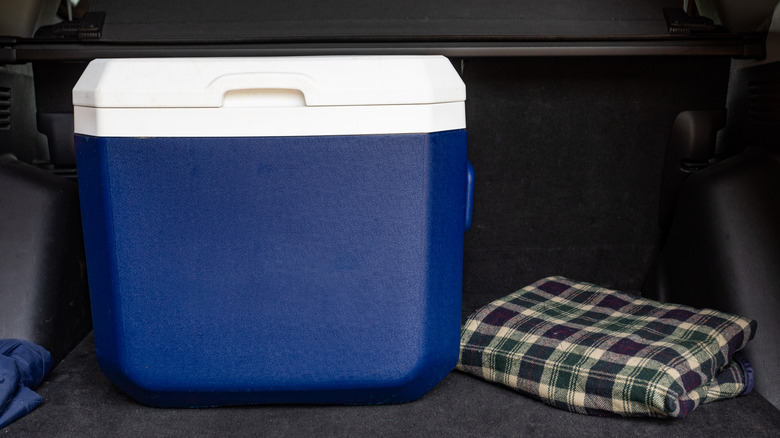How To Keep Ice Cream Frozen In A Cooler For As Long As Possible
There's nothing as disheartening as eagerly opening your cooler to grab the delicious ice cream you carried for your summer picnic only to find it's all melted into a sad soupy mess. Luckily, that doesn't have to be your story. With the right strategy, you can keep your ice cream frozen in a cooler for as long as possible.
First, you must secure the cool environment (aka your cooler) where your frozen treats are kept away from direct heat. Before buying a cooler, do your research so you get the best one for the right price. Choose from the hard-sided types made of plastic and avoid metallic varieties since they conduct heat much faster. But even with one that's top of the line, we recommend having extra insulation as it's a simple way to keep the ice in your cooler from melting too fast. For example, you can line the inside of the box with aluminum foil or thermal liners before putting in the ice cream.
Additionally, arm yourself with a towel big enough to cover the cooler. Once you settle at your picnic spot, wet the towel and drape it on the cooler. This will help keep the chilly box and its contents at a low temperature for longer. The science behind it is that as the water evaporates from the towel, it takes away heat, resulting in a cooling effect. Lastly, keep your cooler under a shade as much as you can.
Pack your cooler properly
Aside from wrapping and lining your cooler to maintain a well-insulated cool environment for your ice cream, the other key factor is to pack it properly. What you put in the box and how you arrange it is a key determinant of how long your delicious frozen treat will stay solid. To begin with, every item or food you plan on putting in the cooler should first be at least chilled if not frozen. Remember to pre-chill the cooler itself as well. To do this, add ice cubes, cover, and let it stay that way overnight. Only empty out the melted ice the next day just before putting in the ice cream and other food items.
Now that you're ready to load the cooler, note that the best ice to use is actually dry ice since it has a much lower temperature than regular ice. You can often buy dry ice at your local grocery store, but never touch it with your bare hands as it can cause frostbite. Instead, use insulated gloves and even wrap the ice in a towel to avoid anyone else touching it accidentally. Lastly, when putting your ice cream tubs in the cooler, you must overpack the cooler as much as you can. Air pockets should be avoided because they are a good conductor of heat and will cause your ice cream to melt faster, therefore, you can fill them with other chilled foods or towels.

